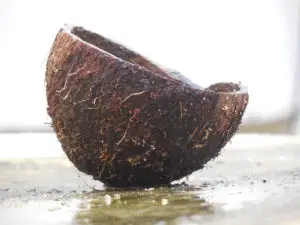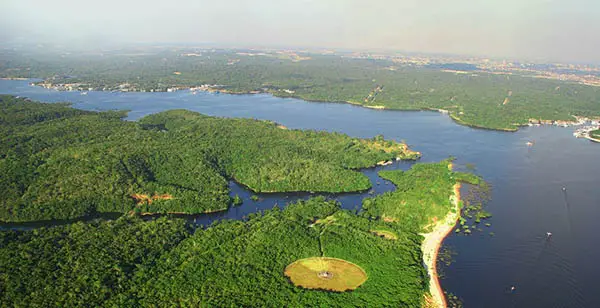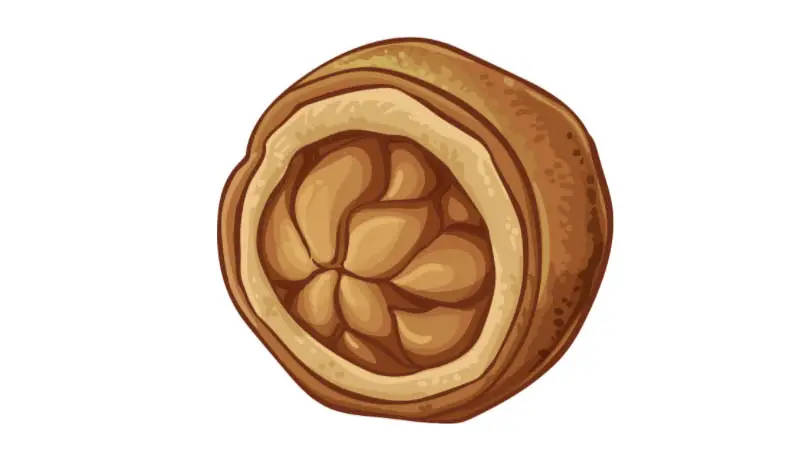Using brazil nut husks (pods as they’re also called) in your aquascape can add something unique, unusual, and less common than the usual elements of rock, wood, and plants!

https://commons.wikimedia.org/w/index.php?curid=3231680
Brazil nuts nestled inside the outer husk. The husk is the part we want for our aquariums. Believe it or not, these can be used in your aquascape. Read more about aquascaping here.
What are brazil nut husks? I’ve seen brazil nuts in shells before, but they’re no good for aquascaping!
The brazil nuts we eat aren’t just protected by shells. They’re also protected by an outer, woody husk. It’s that husk that you want to utilize for your aquascape.
Why should I use brazil nut husks in my fish?
Because they look good. Plain and simple. Actually, that isn’t the only reason. They’re also tough, and seem to last indefinitely!
Brazil nut husks in your aquarium can take the place of the humble coconut shell.

https://commons.wikimedia.org/w/index.php?curid=15650550
Like coconut shells, brazil nut husks can be used to create breeding caves for many cave spawning dwarf cichlids. For example, apistogramma species, kribs, and of course German blue rams!
Why not just use coconut shells then?
You might wonder, why should I go to the trouble of obtaining brazil nut husks when I can just use coconut shells? Because, going back to my original point, they just look good. They have an uneven, ridged, and bumpy exterior.
But the benefits of the bumps aren’t just aesthetic! Those ridges provide excellent anchoring points for popular aquarium plants whose roots cling to wood and rocks, i.e. anubias and java fern species. You can create a useful and eye-catching centerpiece from a brazil nut husk—first, drill a hole in it to create a sanctuary for your fish, then grow a clump of java fern or anubias (or both!) on top and it’ll look great.
But, are brazil nut pods safe for my aquarium?
So far, the answer to that seems to be yes.

A coconut shell can be turned into a breeding cave for dwarf cichlids. Caves gives cichlids somewhere to feel safe — read about it here.
Would I clean and soak any brazil nut husks before putting them in my tank? Yes, definitely. While the husks themselves might be safe, you don’t know if anything damaging might have gotten on them before they came into your possession.
Rinse off your brazil nut husks with water, soak them, maybe even rub them as clean as you can before adding them to your fish tank. Remember, just water, don’t using cleaning chemicals to prepare them.
And will brazil nut husks sink in my aquarium?
Yes! As a result of their density, they will sink immediately without the need for waterlogging/saturating. So they make a great alternative to drift wood / bog wood.
Whose bright idea was it to put brazil nut husks in their aquariums?
One of the Holy Grails for aquarium hobbyists all over the world is to take a fish collecting trip to South America. I speculate that during one of these trips it was noticed that brazil nut husks were either on the forest floor, or even littering the riverbeds themselves.

https://commons.wikimedia.org/w/index.php?curid=54214067
The Amazon basin.
It doesn’t take a genius to put two and two together: taking some of those husks home to place in a biotope aquarium would be a great idea!
Well, where can I get them?
At the time of writing (March, 2019) it’s quite difficult to find them here in the US. But, as we speak, they are sitting discarded on the forest floors wherever brazil nuts are grown. So that means, yes, they’re just going to waste!
I imagine the popularity of using brazil nuts in your aquascape will spread. And because of that, I am certain that enterprising individuals will begin to harvest the discarded husks and export them to aquarium hobbyists all over the world.
I’m actively trying to find a seller for these. So, if I find a reliable source for them in the future I will come back and amend this article to include a link to a source for buying.
But, I Know Where You Can Find Quality Fish Food
I put together a list of my favorite fish foods. Check it out here.



